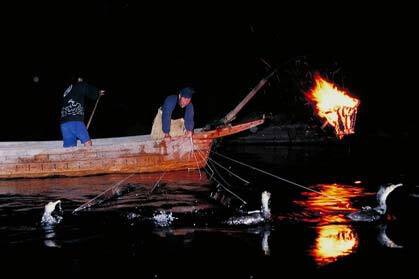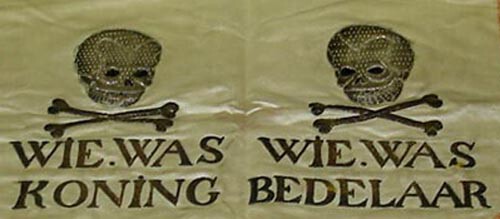-
Posts
591 -
Joined
-
Last visited
-
Days Won
10
Content Type
Profiles
Forums
Events
Store
Downloads
Gallery
Everything posted by kunitaro
-
As Jean san's advise Also, there were a few discussion about Tokubetsukicho papers before. This Tokubetsukicho paper of muramasa's hand wrting is not regular (compare to other TK papers). So I think it is Local shinsa or even fake paper which is not good anyway. Koshirae and fittings are modern. Habaki and seppas are also modern made. Shirasaya looks older than Koshirae (see inside of Koiguchi) ( you can see sword bag is also new, compare to the bag for shirasaya ) When you see the blade, the blade itself looks good (looks like sue-mino) but, Nakago is completely repatined. and the mei looks much fresher than the blade, you can see red(new) rust bottom of mei. This is like a Ferrari kit car The sword(s) with Tokubetsukicho paper for sale, is because it didn't get new Hozon or TH paper. Tokubetsukicho papers are called "certification of Gimei/Gibutsu" in Japan. Another Muramasa with Kicho paper which was issed Showa 38 (1963). This paper seems to be original, however, the paper says "村正と追銘がある"(Muramasa to OKKAKE-MEI ga aru) Okkake-mei or Ato-mei is meaning "later-signed" meanig "Gimei". You can always ask the seller if he guarantee the mei and issuing new Hozon paper. all of JP sellers know exactly what they are selling.
-

Request for help with sayagaki translation
kunitaro replied to Gakusee's topic in Translation Assistance
The Sayagaki of old saya (darker one) is by Sato Kanzan. Newer one by Tanobe senei. As we know, there are many Fake Kanzan's Sayagaki... Tanobe sensei's sayagaki says " There is Shu-gaki (Shi-mei) by Honnami Koson attributed as "Yoshioka Ichimonji" and Tanobe sensei agrees the attribution. He attributed as "Yoshioka Ichimonji" as well. Does the sword has Shu-mei on Nakago ? He said "鎌倉末期 出来宜敷ク地刃健ヤカ也" Kamakura makki, Deki Yoroshiku, Jiba tomo ni sukoyaka nari. (The end of Kamakura period. the blade is well done(made), Both Ji and Ha are healthy) Edit add : I thought those two Saya are from same blade,,,, but, Old Saya with Sato Kanzan Sayagaki is only length and date. 刃長 弐尺弐寸五分有之 hacho, 2 shaku 2 sun 5 bu koreari 昭和丁未年夏日 Showa Hinoto/Histuji (no) toshi Natsu-bi (1967 Summer) I think. -
It looks fine. see some Mokume-hada. the signature is not looks Gimei. It could get Hozon paper and become beautiful after fine polish. Just need to check "Ha-gire" the crack on edge. check if there is any crack on the cutting edge by magnifying glass. If there is no crack all way of the blade. You can send it to the polisher, Professional polisher will be able to fix it to straight, The restoration cost would be a bit more than its (market) value, but It can be back to life.
-
The Signature says "Bizen (no) kuni ju o-" (cut off). It looks like "Sue-Bizen" (late Muromachi period) Katana.
-
宗典作 Soten saku I think it is cast. 行年六十七歳 Age of 67 yeras 就方(花押) Narikata (Kao)
-
Bird and fish design is "Ukai" 鵜飼 Seki is famouse for Sword smithing and "Ukai" at the Nagara-gawa(river) "Ukai" is an old traditional sepcial fishing by using birds. * They take a few years to train, and they are taking care as family member of owner. about 1300 years old tradition. Toyotomo Hideyoshi and Tokugawa Ieyasu had supported this finishing tradition. The owner of the birds (U-sho) are hereditary genarationed masters, they have received title as "Shikibu shoku U-sho" by Kunai-cho (The imperial house agency of Japan). And All cities and towns in Japan have original design manhole cover !!! http://www6.airnet.ne.jp/manhole/zukan/main.html
-

Only in Japan could a sword be ‘life-giving’
kunitaro replied to Henry Wilson's topic in General Nihonto Related Discussion
Thank you John san, A lot to read ! PS : Gun vs Sword is not really correct, Gun was the category of Bow/Arrow and spears in Japan, I think. -

Only in Japan could a sword be ‘life-giving’
kunitaro replied to Henry Wilson's topic in General Nihonto Related Discussion
And How is the history of gun control by government in the world ? -

Only in Japan could a sword be ‘life-giving’
kunitaro replied to Henry Wilson's topic in General Nihonto Related Discussion
How was gun situation, and battles in Europe and the world between 1550-1600 ? -

Help with correct romanji transcription
kunitaro replied to MauroP's topic in Translation Assistance
It is not 「え」of Hiragana. It is Kanji 「之」(kore) is meaning "This". 「鍛錬」= Tanren = Forging. 「鍛」 = Tan = Kita(eru) = forging/hammering/training. 「錬」 = Ren = Ner(u) = kneading. Both meaning are forging (for steel work) and pronunciation of 明珍宗治錬之 is "Myochin Muneharu kore (wo) ne(ru)" -

Only in Japan could a sword be ‘life-giving’
kunitaro replied to Henry Wilson's topic in General Nihonto Related Discussion
Really ??? -
It is very interesting project. If you need help, Please let me know.
-

Koto Tanto Sayagaki Translation needed
kunitaro replied to Ed Hicks's topic in Translation Assistance
The blade looks interesting. It looks a bit tired and the polish is really bad.. Looks Gunto polish. The blade could be Sue-Seki (late 16th century Mino school) but it could be older... The patina (near habaki) is good (old). And Horimono (hi) looks very well done, very deep and beautiful and it is original. (not later done), could be much better than Sue-koto. If I were you, I will give good polish and send it to Shinsa. It is only my opinion by seeing those photos. -
Arnord san, Sorry, i didn't explain enough... NBTHK (Tokubetsu) Hozon paper says 右は当協会の審査の結果(特別)保存刀剣と鑑定しこれを証する This(right) is prove of Kantei as (Tokuebetsu) Hozon token after result of Shinsa by our organization. and you can find at NBTHK home page. 審査規程 Examination regulation and 審査員規程 Exterminator regulation http://www.touken.or.jp/pdf/touken_shin ... -07-03.pdf 保存刀剣 Hozon Token 1江戸時代を下らない格時代、格流派の作で銘の正しいもの、若しくは無名であっても年代、国、系統を指摘し得るもの。 1 Genuine Signature of each period, each school earlier than Edo period..... (maybe full translation of the regulation is somewhere in NBTHK US and Euro branch ??) The signature must be genuine to pass Hozon shinsa. and I have never heard NKS and if you google 日本刀鑑定審査会, Nothing comes out, can not find them, no address no phone number,,, can not locate responsibility. plus, the sentence of "右、美術刀剣と鑑する" is mean nothing., it is same as Torokusho. Furthermore, the handwriting of that paper is infantile.
-

Looking For Help Identifying Three Swords
kunitaro replied to ga31's topic in General Nihonto Related Discussion
No oil on blade into old Saya. please. Oil doesn't harm the blade but Saya. When oil stick inside of Saya, it will stay there, will harm inside of saya wil into wood, and will damage lacquered (urushi) surface from inside. Sometime we see blister (kind of fukure) on old saya because of oil in the saya. Old polished blade doesn't need oil, Just keep it dry. When the blade is fresh polish, it needs oil and it must be in Shirasaya. Shirasaya could be opened and clean inside, but Urushi lacquered Saya can not be opened and clean. -
Sorry for slow reply. Ken san, I was trying to say that it is silly to ask the seller if he guarantee the blade pass Hozon shinsa. because, the paper and seller's description don't say the signature is genuine. The paper certificate the blade as "an art sword".... It doesn't make sense for people who read Japanese. I don't want to talk about the blade itself, because, it is on sale on line, If you know the seller, you can always ask him his opinion, All Japanese seller knows what they are selling. Malcolm san, The temple is not Zojoji, It is 宗福寺 (Sofuku ji) at Yotsuya near Shinjuku where Kiyomaro's grave located. Kiyomaro used to live at Yotsuya as his well known nick name 四谷正宗 (Yotsuya Masamune). Best
-
Kiyomaro was heavy alcoholic as we know... and there is famous Drunk mei sword(s), but the blade is perfect.. I remember that Kiyomaro's Kozuka with TH paper was sold $ 25K or 28K in the past. and I have never seen Kiyomaro katana less than $200K, However, The Paper (on this one) doesn't say that the signature is genuine. It is saying that ”美術刀剣と鑑する" It is attribute as "an art sword" The seller say that "This item is guaranteed to be original Japanese antiques.This item is Japanese traditional hand made item." it doesn't say the signature is genuine either. as I advised a few time before in this forum, you can always ask the seller if he can guarantee to pass "Hozon"... but, it is a bit silly question for this one....
-
a bit interruption, Ford san, Thank you very much for sharing great photo of a master piece of Sasaki Tsuneharu, Signed : Tame Ikeda Suematsu sensei. Ikeda Suematsu sensei was the advicer of mr.Sasaki Tsuneharu, He was often visiting and staying Ikeda sensei's house, Also Ikeda sensei was sponsoring Mr.Sasaki's work, especially when he was making such a tsuba which Ford san posted. A perfect Higo zogan tsuba. Jigane of the tsuba was made by sword smith Mr.So Tsutomu, mr.So said that it was very sensitive and hard work, more difficult than forging a sword. The Material (Jigane) must be really fine and perfect (holding forging) for very fine sukashi and zogan, if there is any fukure or forging mistake, it will ruined the super fine zogan or sukashi, when the works become finer, small mistake will stand out... mr.So Tsutomu made 3 jiganes, used 60% of Tamahagane and 40% of Steel from old Hinawaju for mr.Sasaki. Normal Higo zogan tsuba takes him 3-5month, but, that Tsuba took him 1 year. When He started this project, He send his wife back to parents house, stay by himself alone, and No TV, wake up when sun rise, and go to bed when Sun down. to keep his eye and finger best condition, not allowed any mistake in process, filing or chiseling.. and spending more than half of time for re-sharpening, re-conditioning his tools. The tsuba is one of the highest level work !!!
-
There is Torokusho without blade (accidentally or in back market). Some similar sword could be fixed for old torokusho....
-

Koto Tanto Sayagaki Translation needed
kunitaro replied to Ed Hicks's topic in Translation Assistance
Dear Trotter san, If you follow the stroke order of Kanji, make easier to recognize hand writing letter, I think. Best regards, -

Koto Tanto Sayagaki Translation needed
kunitaro replied to Ed Hicks's topic in Translation Assistance
本阿弥親善 Hon ami Chikayoshi 明治二十七年甲午十月審定記之 Meiji 27nen Kinoe-uma (1894) 10gatsu (Oct,) Shintei (shi) kore (wo) ki (su).) examined/noted It is strange that there is no attribution (maker) however, the Sayagaki itself looks genuine. Is it possible to post photo of the blade ? -
It is 守り刀(Mamorigatana) tradition. Japanese royal family and Daimyo family have tradition to make a sword for new born baby. It is for protection from evil spirit. When the baby has born, put the sword by the baby immediately. The sword will protect him/her for life time. 賜剣の儀 Shiken no gi (Sword gift ceremony) is the first ceremony when baby born. 賜剣の儀(しけんのぎ) 皇室に子供が生まれた際に、天皇から子供の健やかな成長を願い子を守る目的の守り刀を授かる儀式。小刀は白木の鞘で赤い布に包まれ桐箱に入れられ、宮中で天皇の意思を受けた使者(勅使)に託され、勅使が代行として子の元に赴き、子の枕元に供える。 Normally, Hirazukuri Tanto with Suguha hamon. wishing steady/stable/straight life. and for the girl, Maru-mune, Yakizume-boshi, for a boy, maybe, o-gunome midare with tobiyaki etc, for wishing him a strong eventful life is also an idea (half joke)
-
-




